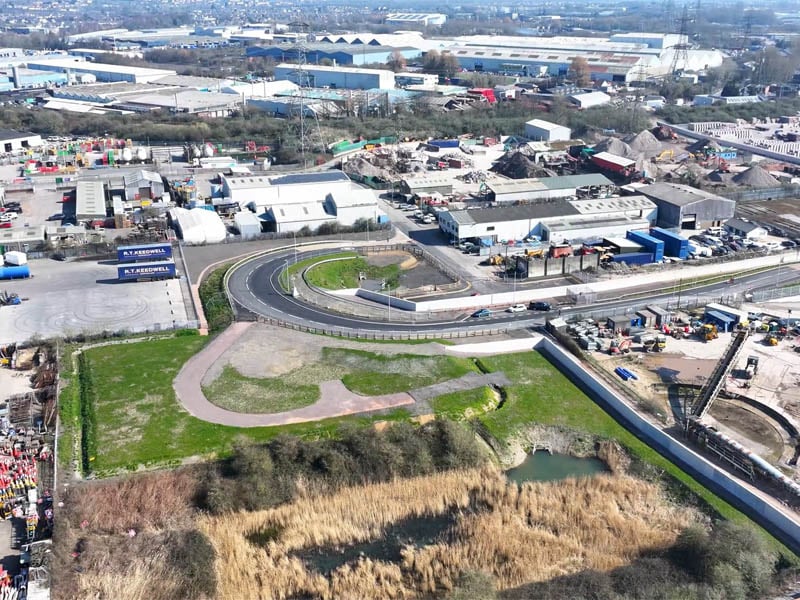Master planning of flood protection to create a visitor destination
At an early stage of the project, our landscape team completed the master planning to provide design improvements that supported the ambitions of the Newport City Council to develop the area as a visitor destination.
We have adapted the shape of the flood embankment to widen the Wales Coast Path along his ridge. With the combination with barrier-free footpaths, gentle gradients and regular rest and seating areas, we ensured safe access for all visitors. The new paths were also designed in such a way that they offer a look over the USK river and improve the connection to the nearby Historical Newport Transporter Bridge via a circular route.
Following meetings for the integration of stakeholders, the team revised the designs to better promote the feeling of location. Overgrown areas were cut back to reduce the feeling of an enclosure, and rest areas were designed with free view in order to deter anti -social behavior. So -called “Mobility Kissing Gates” were installed to prevent the access of off -road bikes and at the same time maintain access for all other users.
Coping with the environmental impact of the flood protection construction
The early involvement of contractors and the cooperation between engineers, landscape architects and environmental specialists were the key to reducing the CO2 footprint and the environmental impact of the project-and at the same time to minimize the impairment of local transport connections and companies.
Our CO2 rating carried out before the construction has shown areas with potential savings. Concrete specifications promoted the use of cement replacement materials instead of ordinary Portland cement, and the team chose “ÖKO” sheet piling-made from recycled steel and 100 % renewable energy-which was reduced by the carbon contained in sheet piling.
The planning team and the contractor worked closely together at an early stage to evaluate the available pile systems. The selected system reduced vibrations by pressing the piles into the floor instead of climbing them. In addition, the need for an access road was avoided that would have led to neighboring locations.
In addition to the protection of local habitats, the determination of this method in an early stage contributed to rationalizing the project's approval process and avoiding claims for damages by minimizing the effects on third parties.
